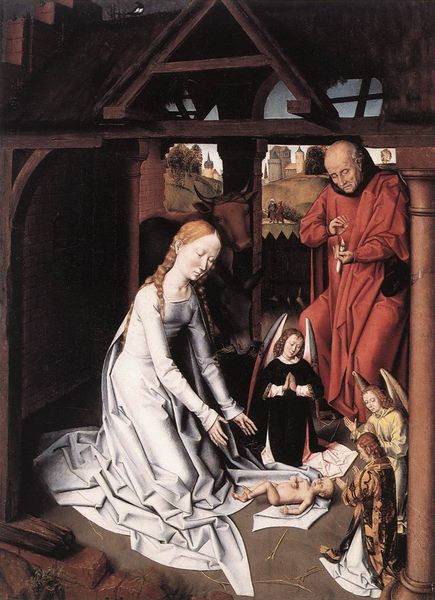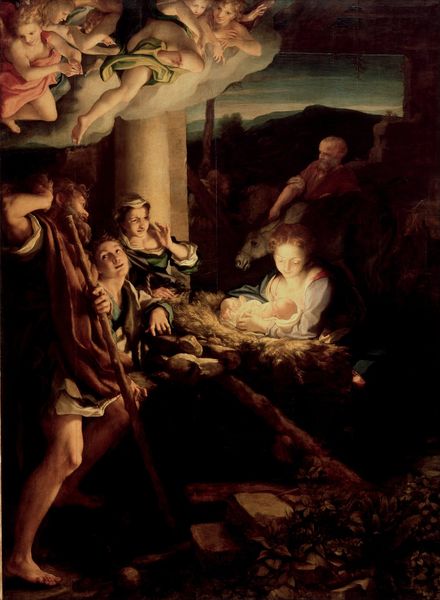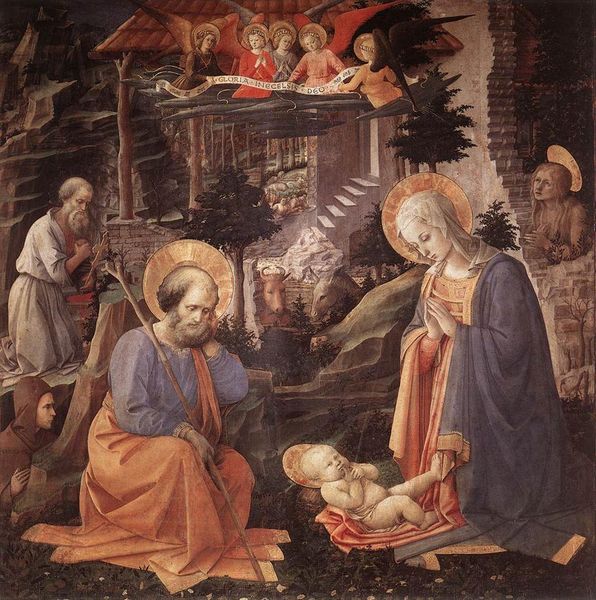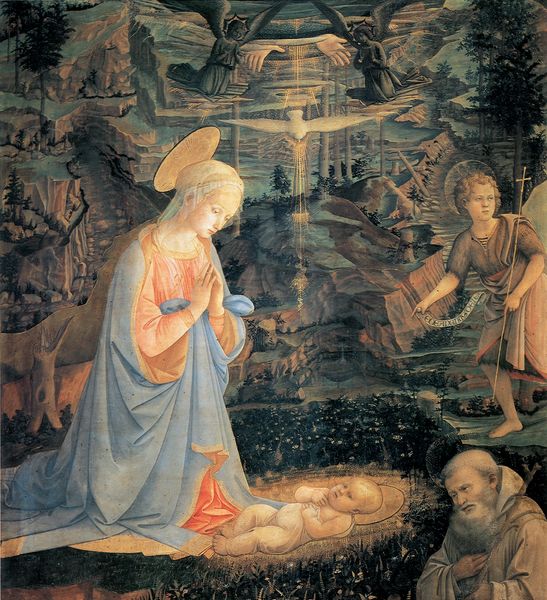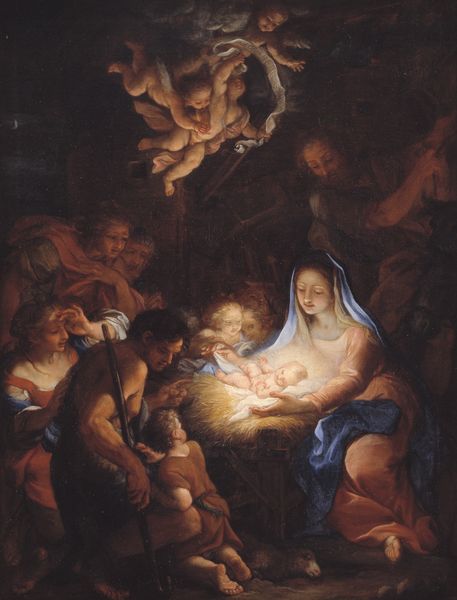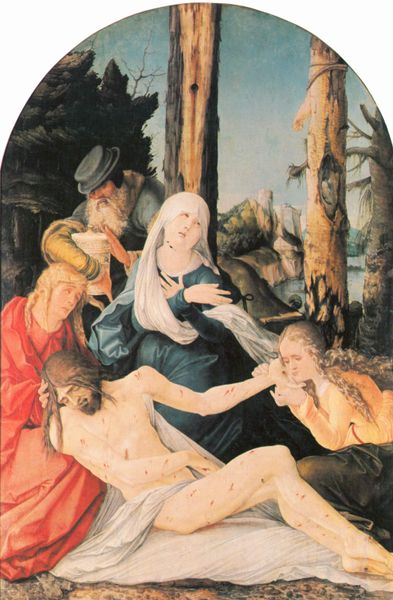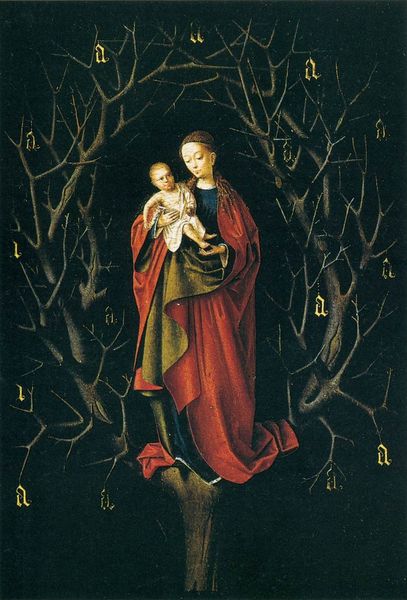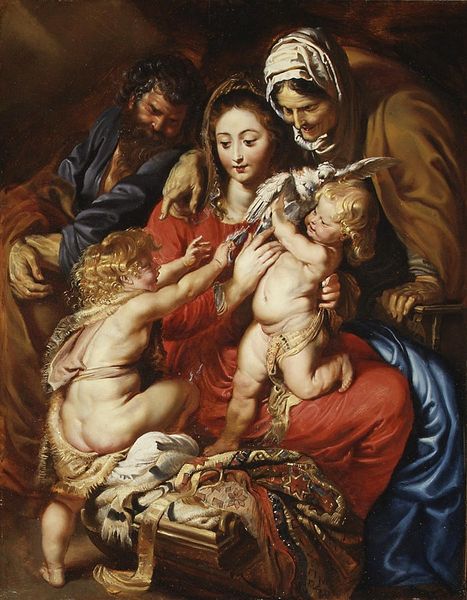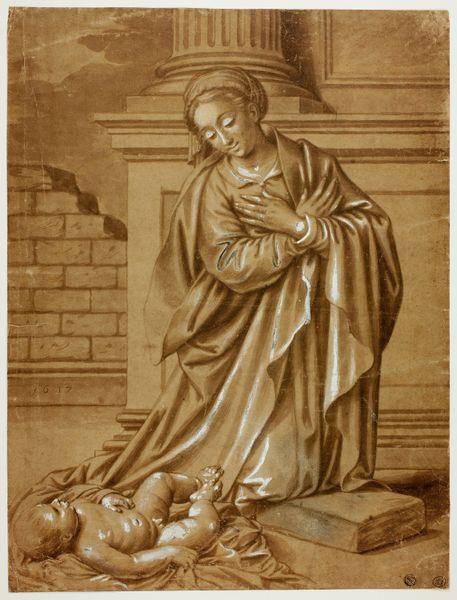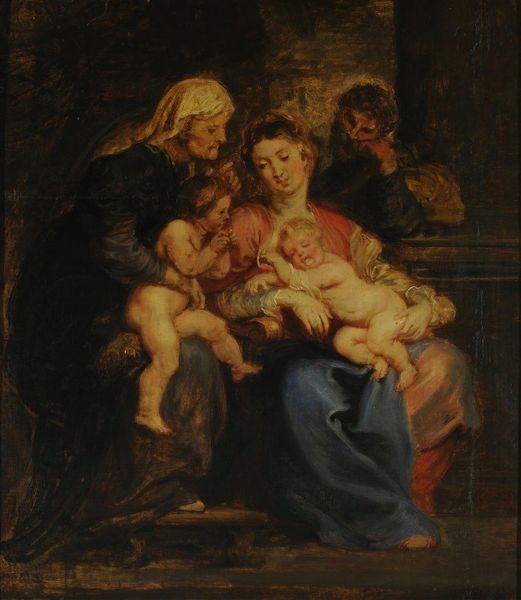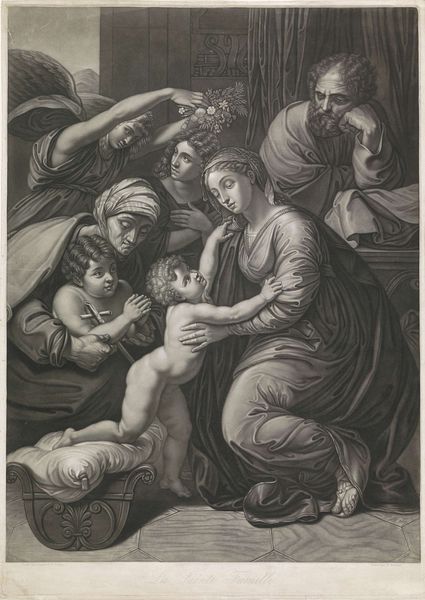
The Adoration of the Infant Jesus 1459
0:00
0:00
filippolippi
Staatliche Museen zu Berlin, Berlin, Germany
painting, oil-paint
#
portrait
#
narrative-art
#
painting
#
oil-paint
#
figuration
#
oil painting
#
history-painting
#
italian-renaissance
#
early-renaissance
#
portrait art
#
virgin-mary
#
angel
#
christ
Dimensions: 129.5 x 118.5 cm
Copyright: Public domain
Curator: Here we have Filippo Lippi’s "The Adoration of the Infant Jesus," painted around 1459, a masterpiece housed right here at the Staatliche Museen in Berlin. Editor: The overall feeling? Pure, serene...almost hushed. It's the stillness before a whispered prayer, maybe? The darkness around the edges amplifies that. Curator: That's quite perceptive. The work exemplifies the Early Renaissance focus on humanism—look at Mary's gentle, almost mournful, adoration. Lippi plays with contrasts; the soft, almost delicate rendition of the figures against the rocky, more austere background. Editor: Right. You have the Virgin in such stark light. Is it the artist saying the spiritual takes precedent or is the artist merely exploiting the play of light and shadows to highlight his mastery of color and design? Curator: Both, probably. Lippi's composition emphasizes verticality, drawing your eye upwards from the Christ child to Mary, and finally to the figures of God and the dove. He guides you. But the work's real beauty, I think, lies in its delicate humanity. These aren't divine beings floating on clouds; they’re figures of contemplation rendered within grasp, you can almost touch them. Editor: But there's so much going on compositionally! We can also spot Saint John. And the detail—the rendering of fabric and landscape alike. And that perspective! Very much pushing towards what his pupil Botticelli would eventually come to represent as ideal forms. Curator: Precisely. This isn't just a devotional image. It shows an intense observation and rendering of nature. Early Renaissance art did not suddenly appear, fully formed and pristine. You are witnessing one artist's attempts, and you are free to witness and observe with as much intensity as Lippi's brushstroke allowed him to observe the world around him. Editor: True. I appreciate how this era straddled symbolism and real-world observation. I had always considered Fra Angelico more significant to Early Renaissance. Shows you what I know. Curator: Each brushstroke feels deliberate, a calculated move within the canvas to draw our focus to this new style of painting.
Comments
No comments
Be the first to comment and join the conversation on the ultimate creative platform.
